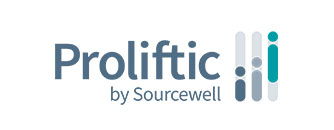Let's take a closer look at what it really takes to effectively collect, measure, and report ESSER program outcomes data:
-
Create a comprehensive list of all intervention programs purchased with pandemic relief funds.
When student data and intervention programming are standardized, reporting qualifying information as a part of these programs is relatively straightforward. But if you use a distributed system in which various schools and departments manage curriculum choices and interventions, it will require more communication and coordination among all groups to compile a list of all qualified activities funded by the ESSER program. This is an essential step that can help a district accurately and consistently measure the success of programs being funded with public tax dollars.
-
Identify specific indicators to evaluate the progress of participants in intervention programs.
It’s important to make sure your measurement methods are logical and reliable since you’ll use these processes to track student growth. You’ll also need to tailor the progress indicators to your desired outcomes. For example, you may track the academic growth of all student participants in an ESSER-funded math intervention program using specific math assessment scores to evaluate outcomes. Or if you spend funds on a program designed to support students’ social and emotional learning, you may evaluate climate surveys to assess students’ comfort with the learning environment.
-
Set specific parameters and processes for data collection.
The degree of data specificity depends on your state’s reporting guidelines for ESSER funding. For some states, school leaders must track enrollment in intervention programs, the number of sessions students attend, or the time students spend with intervention resources.
Even if your state doesn’t require these kinds of granular details for reporting ESSER funding uses and outcomes, it’s still a best practice to collect this level of data. Why? Granular data helps you understand and assess if the intervention programs work as intended or whether you need to adjust your core instruction.
For programs that track data internally, make sure the information can also be provided in an exportable format so it’s flexible for various evaluation needs. If an intervention program doesn’t collect data, you’ll need to identify a simple, low-barrier process (e.g., surveys or shared cloud-based document) to gather information.
-
Invest in tools to effectively collect and manage data.
Data collection and management is a necessity, but it’s a time-intensive practice. To simplify and streamline the process, you can invest in a data management platform that optimizes the evaluation process and makes reporting ESSER funding outcomes a breeze.
Implementing a data management system can also help:
-
Measure intervention outcomes at various levels (student, class, grade, school, and district)
-
Recognize differences across student groups to evaluate the effectiveness of intervention programs and resources
-
Access all student data in one place to accurately identify students in need of extra support across multiple measures
-
Build understanding by presenting data visually as well as in list or table views
-
Track average growth rates for students in each intervention program based on their level of participation
-
Use a customizable bank of research-based interventions to tailor instructional support to each student's needs
-
Monitor student progress and record the adjustments you make to accelerate student growth


